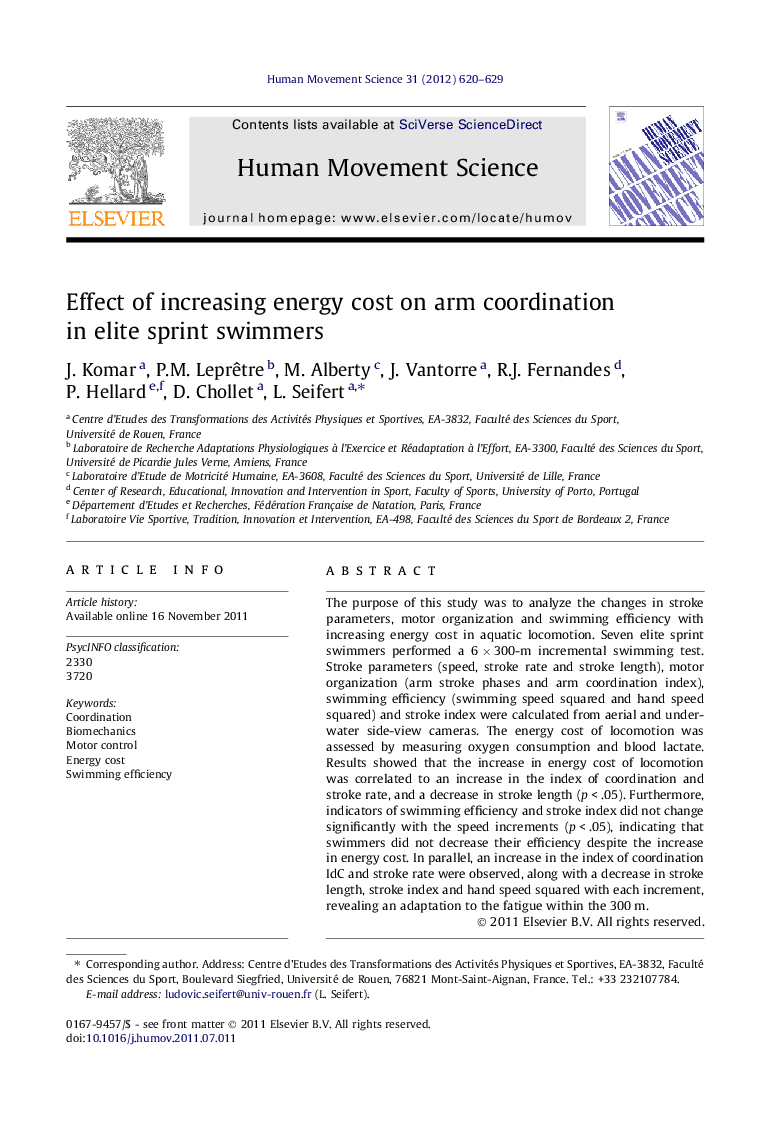| Article ID | Journal | Published Year | Pages | File Type |
|---|---|---|---|---|
| 928448 | Human Movement Science | 2012 | 10 Pages |
The purpose of this study was to analyze the changes in stroke parameters, motor organization and swimming efficiency with increasing energy cost in aquatic locomotion. Seven elite sprint swimmers performed a 6 × 300-m incremental swimming test. Stroke parameters (speed, stroke rate and stroke length), motor organization (arm stroke phases and arm coordination index), swimming efficiency (swimming speed squared and hand speed squared) and stroke index were calculated from aerial and underwater side-view cameras. The energy cost of locomotion was assessed by measuring oxygen consumption and blood lactate. Results showed that the increase in energy cost of locomotion was correlated to an increase in the index of coordination and stroke rate, and a decrease in stroke length (p < .05). Furthermore, indicators of swimming efficiency and stroke index did not change significantly with the speed increments (p < .05), indicating that swimmers did not decrease their efficiency despite the increase in energy cost. In parallel, an increase in the index of coordination IdC and stroke rate were observed, along with a decrease in stroke length, stroke index and hand speed squared with each increment, revealing an adaptation to the fatigue within the 300 m.
► Increase in energy cost was correlated to increase in index of arm coordination and stroke rate. ► Increase in energy cost was accompanied by decrease in hand speed, suggesting fatigue and decrease in swim efficiency. ► Increase in fatigue and exercise intensity has an impact on sprinters motor organization and swim efficiency.
